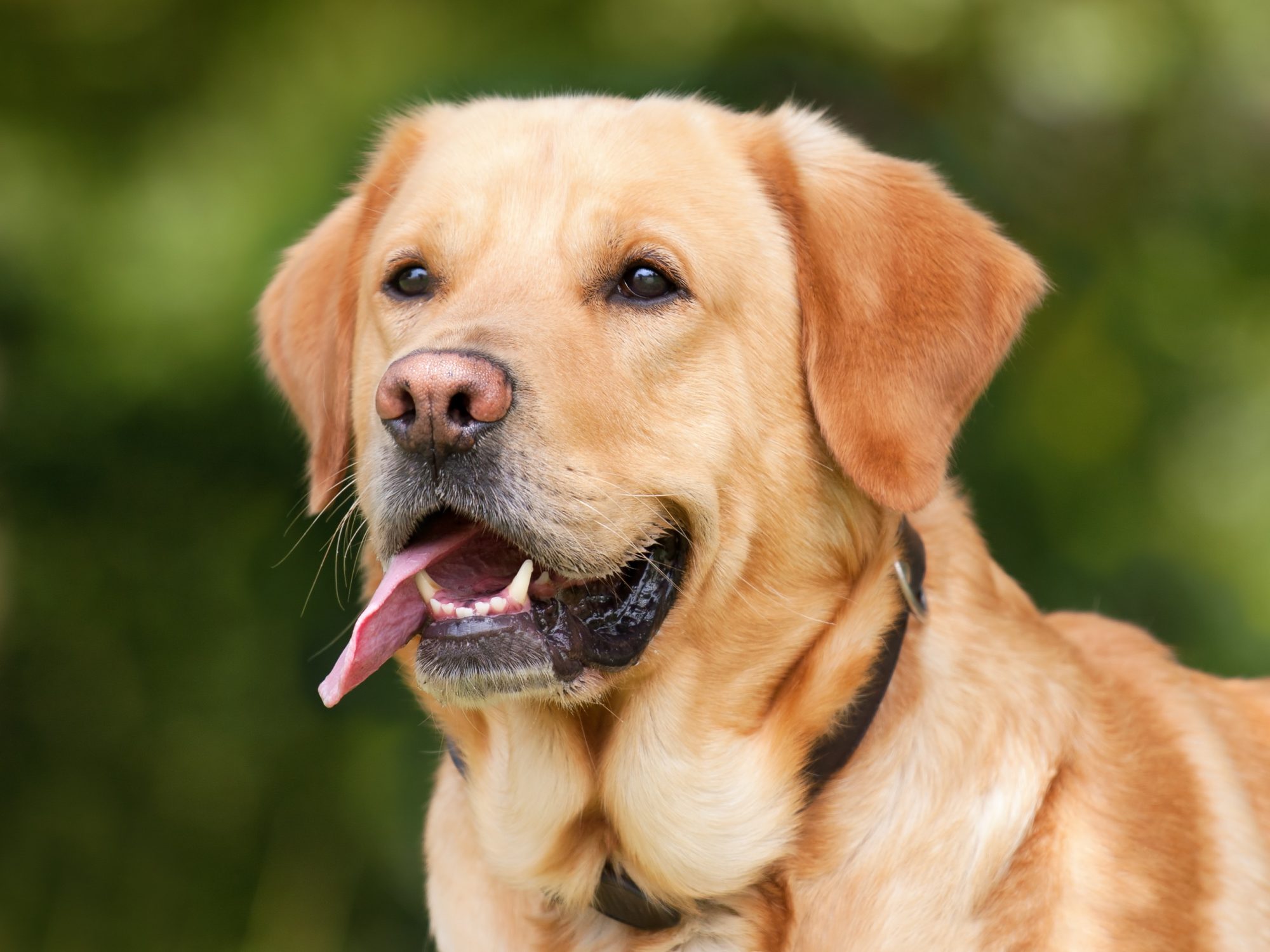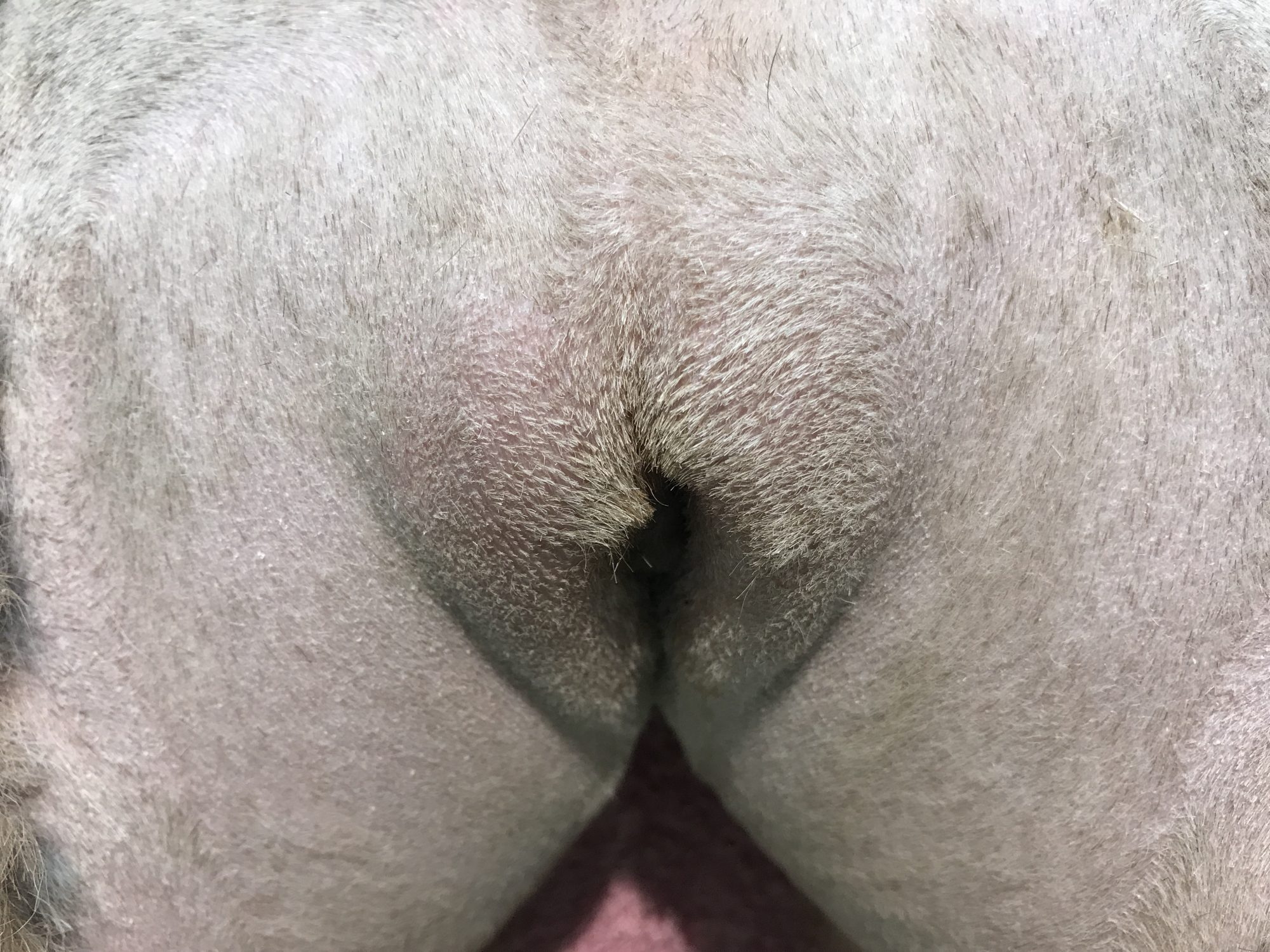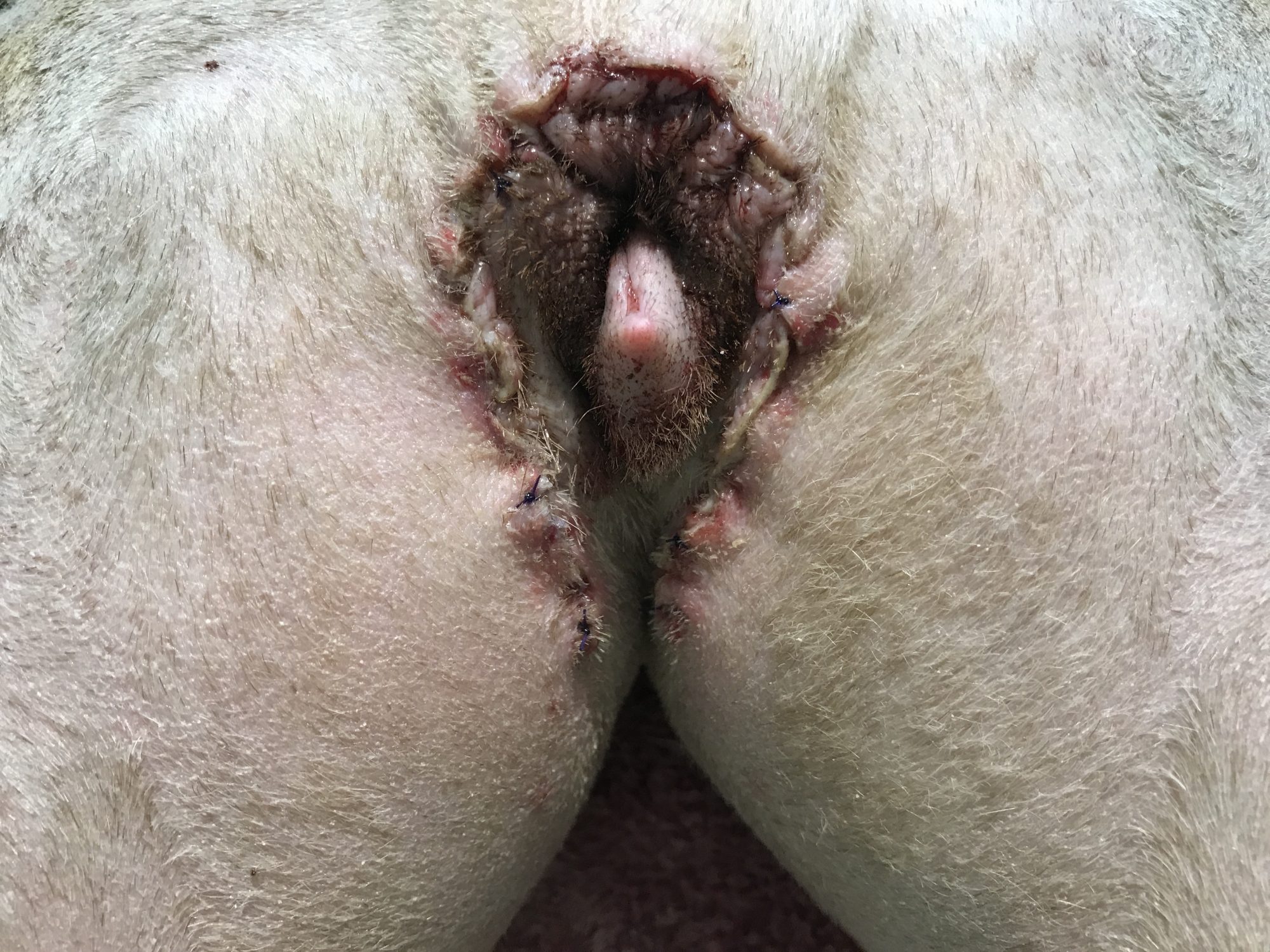Dr. Phil Zeltzman’s Blog
You did cosmetic surgery on your dog’s WHAT???
Piper, a 6 year old Labrador, had battled bladder infections for her entire life. They cleared up with antibiotics, but kept coming back.

Her family vet at South Mountain Veterinary Hospital (www.southmountainvethospital.com) diagnosed what is called a redundant vulvar fold, which is an extra fold of skin covering her vulva. It is also called “recessed vulva” or “vulvar fold dermatitis”. This is a fairly common condition, especially in overweight dogs, and many go un-diagnosed for years.
How can a skin fold cause bladder infections?
The extra skin fold creates a deep pocket that traps urine. In turn, this pocket creates a warm, moist and dark environment, which is perfect for bacteria to multiply. This causes ongoing infections and sometimes a foul odor. Here is a picture of Piper’s back end before surgery: you can’t see her vulva at all.

Signs of bladder infections may include licking of the vulva, scooting of the back end, bloody urine and “accidents” in the house. Other conditions may cause similar signs, so your family vet should eliminate other problems, such as bladder stones and even bladder cancer.
How can we fix this annoying condition?
- The Band-Aid approach is the “medical” treatment. We only treat the symptoms by wiping the area and prescribing antibiotics. This does not treat the cause, so it often frustrating because the infection is likely to come back.
- The ideal treatment is surgery. It’s basically plastic surgery on a dog’s vulva! Surgery involves removing the extra skin to provide better ventilation of the vulva.
This reconstructive surgery is called a vulvoplasty or an episioplasty. The main difficulty of the surgery is to remove exactly the right amount of skin: not too much and not too little. Here is a picture of Piper’s back end after surgery.

Recovery generally takes 3 weeks. I don’t use external skin sutures, so there are no stitches to remove in this sensitive area… All stitches are internal and eventually dissolve. An E collar (plastic cone) is worn for the full 3 weeks to prevent licking and to protect the incision.
Overall, this is a common yet frustrating condition. Fortunately, surgery is typically very successful and pet owners are usually very happy with the end result… as well as their dogs!

Dr. Phil Zeltzman is a traveling veterinary surgeon in Pennsylvania & New Jersey. An award-winning author, he loves to share his adventures in practice along with information about vet medicine and surgery that can really help your pets. Dr. Zeltzman specializes in orthopedic, neurologic, cancer, and soft tissue surgeries for dogs, cats, and small exotics. By working with local family vets, he offers the best surgical care, safest anesthesia, and utmost pain management to all his patients. Sign up to get an email when he updates his blog, and follow him on Facebook, too!

